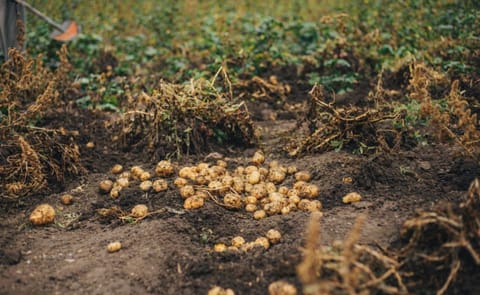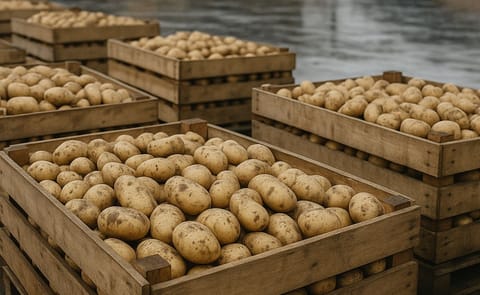Europa: challenging conditions for Northern potato growing countries
Exceptional years follow one another, but are always different

The 2024 growing season – with the main harvest not yet done – was a difficult, stressful, risky and expensive one for potato growers across the NEPG in North-west Europe. New challenges appear as climate change takes its toll.
With a 7 % higher area in the EU-04 (560.000 ha, i.e. plus 37.000 ha), global production will be higher than the 5-year average i.e. more than 22,7 million tons, with average yields per ha probably being similar to last year. Overall quality is good, with generally high underwater weight, but mostly with not enough length…
A difficult growing season
The season was marked by a nearly endless list of problems and challenges: not enough seed led to higher seed prices, a lot of cut seed was used (with some dramatic consequences due to poor management and/or even more rain after planting), and more than 80 different varieties were cultivated—mainly in Belgium — for the processing industry.
Heavy and constant rainfall during the planting season and summer led to plantings spread for more than 10 weeks! This occurred mainly in Belgium and the southern Netherlands, and less so in France and Germany. The majority of plantings occurred in conditions with poor soil structure.
Important rainfall before, during, and after plantings caused one of the largest late blight pressures ever. New or evolving blight strains and the need to combine different active ingredients for each treatment led to higher spray costs and, in most cases, more sprayings except for the late-planted fields (some of these had not yet been planted or emerged at the time of the first treatments!).
Harvest and storage
Adequate attention should be paid to harvesting and storage in the coming weeks. The less common varieties may not be suitable for storage (low underwater weight, poor frying quality...). For the common varieties - depending on weather conditions at harvest - problems with bruising (black spot, due to high underwater weight), bacterial rot and/or tuber late blight may occur.
Rising processing capacity is not automatically synonymous with rising demand of potatoes or sales of frozen products!
The potato industry is doing well. However, growers must realize and take into account that processing capacity, especially in North-west Europe but also in North America, Asia and South America could be rising faster than the demand of processed products. Growers must accompany demand and not precede it!
Produce what you can sustainably and preserve your resources…
Producers should seriously consider producing what they can reasonably, and not just what processors want them to produce. With climate change increasing and accelerating, growing potatoes is not only getting riskier and more expensive, it is also putting increasing pressure on the natural resources they depend on: soil, water and biodiversity in their environment. Growers need to preserve this capital if they want to continue farming successfully in the future.







